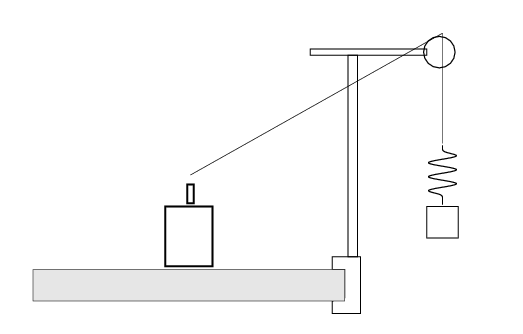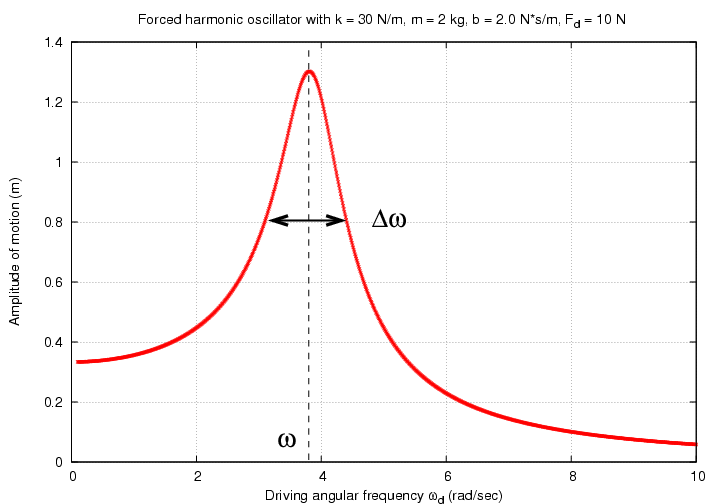 Copyright © Michael Richmond.
This work is licensed under a Creative Commons License.
Copyright © Michael Richmond.
This work is licensed under a Creative Commons License.
Predict the resonant frequency
Enough theory -- it's time to put physics to the test.
Your job today is to set up a system which oscillates,
predict its resonant frequency, and then check to see
if you were correct.
Calculations of uncertainty will be given a high weight in
today's experiment.
You will have to figure out what to do for most of today's
activity. Feel free to ask for help.
- Determine the spring constant k of your spring.
Be sure to include an uncertainty and units.
- Predict the natural frequency of oscillations
for your spring. Express in two ways,
with the appropriate uncertainty and units for each.
- the natural angular frequency ω0
- the natural frequency f0
- Attach a mass m = 45 g
to your spring. Measure the actual frequency of
oscillations, in cycles per second, with an uncertainty.
- Does your theoretical value for the natural frequency
agree with the actual value, within the uncertainties?
- Set up the equipment needed to drive your spring-plus-mass
system with an oscillator -- see the figure below for tips.

Set the amplitude of the driver to the 9 o'clock position.
Starting at about 10 Hertz, drive your system and measure
its amplitude of oscillation.
Watch for at least 5 or 6 cycles at each setting,
and choose the largest
amplitude you see.
Make a table of measurements from 10 Hertz down to 1 Hz.
Adjust the steps in frequency to "zoom in" on interesting
behavior.
- Make a graph showing amplitude as a function of frequency.
- What is the actual frequency of resonance?
Provide a value, units, and an uncertainty.
Does it agree with your prediction, within the uncertainties?
If you have time, for extra credit .....
A resonant system will often show behavior like that in the graph
below: the amplitude of oscillations reaches a peak at
some central frequency ω,
with some width Δω around that peak.
The "quality factor", Q,
of a system, is a measure of how narrow the peak
is. The narrower the peak, the higher the Q factor.

ω
Q = -----
Δω
Systems with high Q values will tend to oscillate
for longer duration before the damping causes them
to decrease and stop moving.
In fact, to a rough approximation,
it is said that
Q is approx number of cycles required for the system's
energy to fall to
1 / e2π
of the original energy
- Use your measurements and graph to determine the
central frequency, width, and Q factor for your system.
- Test the relationship between Q and the time it takes
for oscillations in your system to decay.
 Copyright © Michael Richmond.
This work is licensed under a Creative Commons License.
Copyright © Michael Richmond.
This work is licensed under a Creative Commons License.

 Copyright © Michael Richmond.
This work is licensed under a Creative Commons License.
Copyright © Michael Richmond.
This work is licensed under a Creative Commons License.
